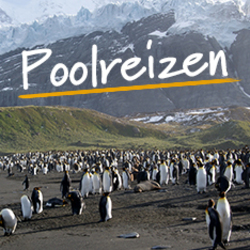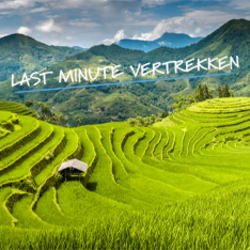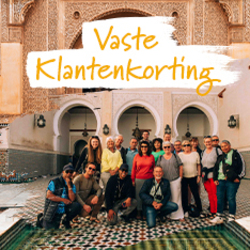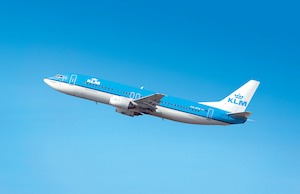Activities
- Walking & Trekking
- Summits
- Wildlife Walks
- New Walking Holidays
- — Explore the jungles of Taman Nagara — Meet the orangutans of Sepilok — Summit Mount Kinabalu — Enjoy a food tour of Kuala Lumpur
Food
-
1
Start in Kuala Lumpur
Welcome to Kuala Lumpur, the capital city of Malaysia, known by many simply as KL. You can arrive at the hotel at any time today, check in at the hotel is from 15:00. There is a welcome meeting with your tour leader this evening, a good chance to ask any questions you may have and to connect with the group. Accommodation: Santa Grand Signature Kuala Lumpur (or similar)
-
2
Discover the culinary delights of Malaysia with a food tour of KL before visiting the Batu Caves
Malaysia is proudly diverse and this is reflected in the capital, KL, with its mix of Malay, Indian and Chinese traditions and people. One of the best ways of exploring this diversity is through a food tour of the city. We discover different neighbourhoods with distinct sights, sounds, smells and, of course, delicacies. We start our journey at Masjid Jamek and learn how the city started. What better way to enjoy the day by sampling typical food that Malaysians enjoy at a local eatery? Wandering through small streets, we uncover the cultures of the Chinese and Indian communities who came to KL to make their fame and fortune. We also visit the oldest Chinese and Indian temple in KL to understand more about these communities. Our visit to Chinatown is rewarded with tasty noodles among the local people. After, we take a short ride on the modern local transport system towards Brickfields – the local Little India. As we walk through, our senses are stimulated by colourful architecture, music and food. We sample delicious Indian dishes served on banana leaves and seek out street vendors for snacks to end our food journey. This afternoon, we take public transport to the Batu Caves. These limestone caves are a holy Hindu site and are guarded by a giant statue of the Hindu god Lord Murugan. Behind the statue are the 272 steps that lead to the caves and large numbers of monkeys. If you want a drink with amazing views later this evening, head to one of the many rooftop bars in KL and enjoy the cityscape at night. Accommodation: Santa Grand Signature Kuala Lumpur (or similar)
-
3
Ketumbar Hill trek; transfer to the Cameron Highlands and visit a tea plantation
We aim to check out of the hotel early this morning to drive about 30 minutes to the start of the trail on Ketumbar Hill, which is part of the Sungei Puteh forest reserve (a popular exercise spot). We follow a loop trail, which starts with a moderate climb up to about 9855ft (300m), where we pause for a packed breakfast before hiking down another trail back to the start (some sections may be a little slippery if it has rained). We then rejoin our minibus and transfer (five to six hours) to the Cameron Highlands with a lunch stop along the way. The Cameron Highlands is a British-era hill station and the nights are noticeably cooler here. The area is known for strawberry farms and tea plantations. For those interested, there may be time to visit one of the tea plantations or enjoy tea and scones. Accommodation: Century Pines (or similar)
-
4
Trek through the montane forests of the Cameron Highlands
Meeting our local guide at the hotel at 8.30am, we embark on a jungle trek through the highlands up to Gunung Jasar. The well-maintained trail gradually takes us up the side of a river valley on an undulating path with a fairly steep final ascent to reach the summit (5,580ft/1,700m). The Jasar range is protected primary forest and the air is generally cooler, though it can get very humid. There’s a lot of birdlife and, thanks to the altitude, lots of mosses and lichen. Reaching the peak, we can enjoy views of the tea plantations below. We head back along a different route, which can be steep in places and you may need to help your balance by grabbing tree roots. Accommodation: Century Pines (or similar)
-
5
Transfer to Taman Negara; followed by exhilarating boat ride and canopy walk; optional night walk
Leaving the highlands, we drive (about five hours plus stops) to one of the oldest-remaining rainforests in the world. Within in Taman Negara National Park, these 130m-year-old primeval forests are home to rare animals, including Malayan tigers, Indian elephants and crab-eating macaques (though these animals are rarely seen). We should arrive around mid-afternoon. Later this afternoon, we board motorised canoes to journey along the park's waterways, navigating several sets of rapids − be ready to get wet! En route, we stop to enjoy a canopy walkway, taking to the treetops on a 985ft (300m) long series of fortified rope bridges that rise 130ft (40m) above the forest floor. After, we get back in the canoe for more rapids. This evening, you can go on an optional night walk in search of interesting insects and nocturnal animals. Accommodation: Mutiara Resort (or similar)
-
6
Teresek Hill and Lata Berkoh
Explore the primary forest of Taman Negara on a four to five-hour trek to Teresek Hill. We take the Bukit Teresek trail, which includes a mix of boardwalks and natural paths, and reaches an elevation of 1,095ft (334m), providing a scenic view of Mount Tahan. After, we walk back to Lubuk Simpon for a packed lunch. We are then met by boats, which take us along the Tahan River to Lata Berkoh (Cascade Waterfall) some 20 minutes away. En route, we stop by a tualang tree, one of the largest and oldest trees in Taman Negara, and visit the Kelah fish sanctuary. After visiting Lata Berkoh, we return to our lodge (45 minutes), arriving mid-afternoon. The rest of the day is free to either relax or hike independently along the nearby boardwalks. Accommodation: Mutiara Resort (or similar)
-
7
Return to Kuala Lumpur; fly to Sandakan; transfer to Sepilok
Leaving the rainforest, we transfer (four hours) to the urban jungle, KL. Depending on what time we arrive, we may have free time for lunch before we head to the airport to catch our flight to Borneo. Please note, there is a 33lb (15kg) restriction on checked baggage for the domestic flight, but it is possible to pay for excess luggage if you speak with your leader on day one of the tour. Malaysia is a country of two halves: Malayan Peninsula and Borneo. This afternoon, we leave the Peninsula and our first leader behind and head for the island of Borneo where our next leader waits for us. The flight to Sandakan takes about three hours, arriving in the evening, then we transfer to our lodge in Sepilok. Accommodation: Sepilok Jungle Resort (or similar)
-
8
Visit Sepilok Orangutan Rehabilitation Sanctuary
This morning, we visit Sepilok Orangutan Rehabilitation Sanctuary. Created in 1964, the 16.5sqmi (43sqkm) reserve of primary forest is the largest orangutan sanctuary in the world and rehabilitates orphaned or captured orangutans for release back into the wild. We visit the informative park headquarters and look for orangutans during feeding time. As the ticket is valid all day, we can return for the afternoon feeding if you wish. We may also watch young orangutans in the nursery section. There is also the opportunity to visit the nearby Bornean Sun Bear Conservation Centre and the Rainforest Discovery Centre. Accommodation: Sepilok Jungle Resort (or similar)
-
9
Follow the Sepilok Laut Trail through the rainforest
We have an early start and head out on the Sepilok Laut Trail. This walk, of around 5.5mi (9km), starts from the rainforest discovery centre, where we have a chance to do a canopy walk. From here, the trail journeys through primary forest giving us the opportunity to experience flora and fauna of eastern Borneo’s lowlands. The reserve we walk through is home to 350 tree species, 90 mammal species and 200 bird species. The trek itself includes two fairly steep hills plus several smaller hills and can get particularly muddy during the rainy season. We also recommend wearing leech socks (which can be purchased locally) or tuck your trousers into long sports socks. The trek ends at the Sepilok Laut reception centre, where boardwalks allow us to explore a mangrove area filled with fiddler crabs, macaques and monitor lizards. We later take a boat for around 20 minutes to Sandakan Jetty before catching a 30-minute transfer back to Sepilok. Accommodation: Sepilok Jungle Resort (or similar)
-
10
Transfer to Kinabalu Park with optional visits to Kundasang War Memorial and exploring the Kinabalu Park lower trail
We head towards the highest mountain in Southeast Asia, Mount Kinabalu, at 13,345ft (4,095m). The journey takes five to six hours. Depending on time, we should have the opportunity to visit the Kundasang War Memorial (optional), which commemorates prisoners of war who died during the death marches of the Second World War. The memorial is made of four gardens: the Australian, English, Malaysian and the Contemplation Garden that represent the different nationalities. There are also several self-guided trails through the gardens at the base of the mountain. This evening, we have a briefing about the two-day Mount Kinabalu trek and need to pack our bags for the trek. Our main packs are left behind. Porters are available to carry bags up to the hut that we are staying at tomorrow night, please ask your leader about this. It is recommended each trekker brings a rain jacket, warm hat, waterproof gloves, fleece, personal first-aid kit, headtorch (head lamp), sunscreen, sunglasses, change of clothes, toiletries, snacks, water and earplugs. Ideally you should have a 30-35 litre backpack. Tonight, we stay in dorms with shared bathrooms and depending on the gender make-up of the group, couples may have to be split into separate dorms. Accommodation: Kinabalu Park HQ
-
11
Start climbing Mount Kinabalu towards Laban Rata
Due to its great height, Mount Kinabalu has a several climatic zones. It has an enormous variety of plants and animals and is a naturalist’s paradise. There are rhododendrons, innumerable mosses, fungi and ferns, more than 1,200 orchid species and the largest flowering plant in the world, the rafflesia. Particularly interesting are the carnivorous and insectivorous pitcher plants. There are also many animals including badgers, monkeys, squirrels, flying lemurs and deer. However, the chances of seeing many of these on the mountain climb are rare as the trail is well trodden and frequently visited. We are more likely to encounter the many birds, snakes and insects of the region. The ascent of Mount Kinabalu is not technically difficult but most people find it challenging so you need to be fit and prepared for a tough two days. The path is wide and clear so you can climb at your own walking pace. The altitude makes it tougher the higher you climb but it really only becomes harder on the summit day. The trek climbs up through a multitude of vegetation zones and cloud forest to reach Laban Rata Resthouse at 10,825ft (3,300m). The temperature is noticeably colder due to the altitude and really feels chilly, especially when it clouds over. There is a very eerie feel to the place with the huge summit cliffs looming up behind the mountain huts. We stay in dorms in the hut and make the summit climb very early the next morning. Again, couples may be split depending on the gender make-up of the group. Accommodation: Laban Rata Hut
-
12
Summit Mount Kinabalu and return to the start; transfer to Kota Kinabalu
We wake around 2am to slowly make our way to the summit. The challenging climb from Laban Rata takes up to five hours, depending on fitness and the impact of altitude. Upon leaving Laban Rata, it is approximately 1,150ft (350m) through the treeline to some viewing decks before a section of wooden steps with handrails all the way to the summit. The path levels out as we pass through a boulder field and join Sayat Sayat, the last checkpoint before the summit, where there are toilets. From Sayat Sayat, a final rope marks the route to the top, a distance of about 1.1mi (1.8km). Waterproof gloves are recommended to protect your hands from rope burn (and to keep them warm). A torch (flashlight), waterproofs and warm layers are essential. As dawn breaks, we will be close to the summit at Low’s Peak. The momentous summit feeling is matched by the tremendous view stretching across this part of Borneo as the early morning unfolds. On clear days, we can see as far as the southern islands of the Philippines. With a long way to descend and aching legs, we return to the base at Laban Rata to collect any belongings and have breakfast. We continue down the mountain back to the start where there is normally a simple afternoon tea (with fried rice and bread) for trekkers. Once we have returned to the bottom, we transfer to our hotel in Kota Kinabalu, approximately two to three hours’ drive. The arrival time is determined by when we leave Kinabalu Park, but is in the afternoon or evening. Accommodation: Grandis Hotel (or similar)
-
13
Free day in Kota Kinabalu; optional snorkelling or boat island hopping trip, wetland birdwatching or cultural village
Today you are free to enjoy some of the many activities Kota Kinabalu has to offer. A popular option is to visit one of the tropical islands in the marine park, a 15-minute boat journey from the city and with excellent snorkelling and diving opportunities. You can never be bored here, whether you are relaxing on the white sand, snorkelling or swimming in the warm South China Sea. There are good birdwatching opportunities in the wetlands not far from KK and a culturally interesting village in Mari Mari where you can learn about the different cultures of Sabah. Your tour leader can help organise any of these options. Accommodation: Grandis Hotel (or similar)
-
14
End Kota Kinabalu
The trip ends today after breakfast. We bid a fond farewell and start our return journeys home. If you’d like a bit more time to relax, speak to your sales representative about extending your stay.




































